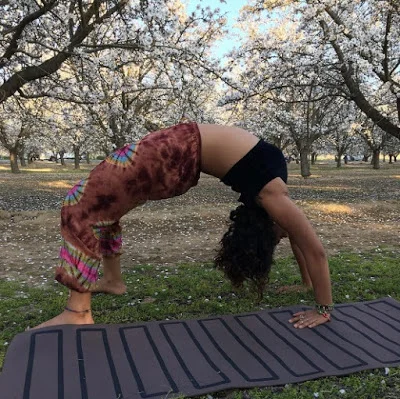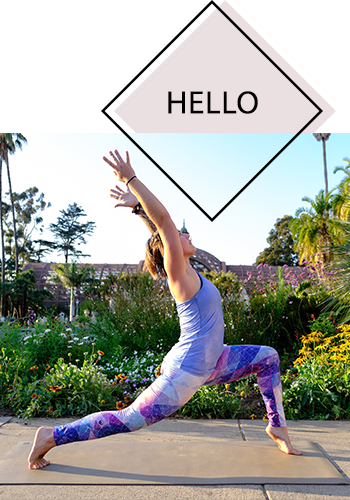What to Look for in a Pair of Yoga Pants: A Guide to Style, Comfort, and Functionality
Finding the perfect pair of yoga pants can feel like searching for the holy grail of activewear. They need to be comfortable, functional, and stylish—all while keeping up with your most dynamic moves. With countless options on the market, how do you choose the right pair for your practice?
Whether you're flowing through vinyasas, holding a warrior pose, or lounging post-practice, here’s a guide on what to look for in a pair of yoga pants.
1. Comfort Is Key
Comfort is non-negotiable when it comes to yoga pants. Since yoga often involves bending, stretching, and holding poses, your pants should move with you without causing irritation or restriction.
What to Consider:
Soft, Breathable Fabric: Look for materials like cotton blends, bamboo, or high-quality synthetics that feel soft against your skin and allow airflow.
Seam Placement: Flatlock seams prevent chafing and ensure that the pants feel smooth against your skin.
Stretchability: Opt for fabrics with four-way stretch, which allow for maximum movement in all directions.
Pro Tip: Always try them on or check return policies if shopping online. Walk around, bend, and stretch to ensure they don’t dig in or feel restrictive.
2. A Flattering and Functional Fit
The fit of yoga pants plays a significant role in both your confidence and your performance. The right pair should hug your body without feeling too tight or too loose.
Types of Fits:
High-Waisted: Provides tummy control, stays in place during movements, and offers a sleek silhouette.
Mid-Waisted: A versatile option for those who prefer less coverage without risking slippage.
Compression Fit: Great for high-intensity or power yoga, as they provide added support and muscle recovery.
Relaxed Fit: Ideal for slower practices like yin or restorative yoga, offering more room for ease of movement.
Pro Tip: Avoid pants that feel overly tight at the waistband or around the knees. They should feel snug but never restrictive.
3. Fabric Matters
The fabric of your yoga pants determines how they perform, especially during sweaty sessions or challenging poses.
Key Features to Look For:
Moisture-Wicking: Keeps sweat away from your skin, ensuring you stay dry and comfortable during intense practices like hot yoga.
Breathability: Lightweight and breathable fabrics prevent overheating.
Durability: High-quality fabrics maintain their shape and color, even after multiple washes and stretches.
Common Materials:
Nylon-Polyester Blends: Known for their stretch, durability, and quick-drying properties.
Cotton Blends: Soft and breathable but may lack moisture-wicking abilities.
Eco-Friendly Options: Bamboo and recycled materials are excellent choices for sustainability-minded yogis.
Pro Tip: Check for a gusseted crotch (a triangular or diamond-shaped piece of fabric) to prevent tearing and enhance flexibility.
4. Length and Style for Your Practice
Yoga pants come in various lengths and styles, each suited to different preferences and types of yoga.
Length Options:
Full-Length (Leggings): Great for cooler weather or providing full coverage during inversions.
7/8 Length: Hits just above the ankle, offering a modern and versatile look.
Capri-Length: Perfect for warmer climates or more dynamic practices.
Shorts: Ideal for hot yoga or when you want maximum breathability.
Style Features:
Minimalistic Designs: Solid colors or subtle patterns work well for a classic, versatile look.
Bold Prints and Patterns: Express your personality and add a playful vibe to your practice.
Pockets: Functional for carrying essentials like your phone or keys (especially if you’re wearing them outside the studio).
5. Waistband Design and Stay-Put Power
A good waistband can make or break your yoga pants. It’s essential that the waistband stays in place, especially during inversions or flows.
Types of Waistbands:
Elastic Waistbands: Lightweight but may dig in or roll down during movement.
Wide Waistbands: Provide a secure, flattering fit and prevent rolling or slipping.
Drawstring Waistbands: Allow for adjustability, though they may not be as sleek.
Pro Tip: Test the waistband by performing forward folds, backbends, and side stretches to ensure it stays put.
6. Transparency Test
No one wants to worry about see-through yoga pants during downward dog! Ensuring your pants are squat-proof is a must for confidence during practice.
How to Check for Transparency:
Bright Lighting Test: Stand in bright light or natural sunlight and bend over to check for visibility.
Fabric Thickness: Thicker, higher-quality fabrics tend to be more opaque.
Double-Lined Material: Some yoga pants include an extra layer in key areas for added coverage.
7. Durability and Longevity
Yoga pants are an investment, so you’ll want a pair that lasts through countless sessions and washes.
What to Look For:
Reinforced Seams: Ensure the pants won’t unravel or lose shape.
Pilling Resistance: Choose fabrics that resist pilling, especially if you use a mat with a textured surface.
Shape Retention: High-quality materials should snap back into shape after stretching.
Pro Tip: Read reviews to see how the pants hold up over time, particularly in high-use areas like the knees and waistband.
8. Sustainability and Ethical Practices
For eco-conscious yogis, choosing sustainable yoga pants aligns with the practice of ahimsa (non-harming). Many brands now offer options made from eco-friendly materials and ethical labor practices.
Sustainable Materials:
Recycled Polyester: Made from post-consumer waste like plastic bottles.
Organic Cotton: Produced without harmful chemicals or pesticides.
Bamboo: A renewable resource that’s soft, breathable, and biodegradable.
Pro Tip: Look for certifications like GOTS (Global Organic Textile Standard) or Fair Trade labels to ensure ethical production.
9. Versatility Beyond the Mat
The best yoga pants transition seamlessly from the studio to your everyday life. Look for styles that pair well with casual tops or sweaters so you can go from class to errands with ease.
Versatile Features:
Neutral colors like black, navy, or gray.
Pockets for convenience.
Stylish patterns or details that elevate their look.
10. Budget and Value
While premium yoga pants often come with a higher price tag, they’re usually worth the investment for their durability and performance. That said, there are affordable options that deliver great quality if you’re on a budget.
Budget Tips:
Look for sales, discounts, or end-of-season deals from trusted brands.
Consider multipurpose leggings that work for yoga, running, and lounging.
Test affordable options but pay attention to transparency, durability, and fit.
11. Brands to Explore
While personal preference plays a big role, here are a few brands known for high-quality yoga pants:
Lululemon: Famous for durability and sleek designs.
Athleta: Offers inclusive sizing and eco-friendly options.
Alo Yoga: Combines performance with high-fashion aesthetics.
Girlfriend Collective: Sustainable and stylish, made from recycled materials.
Old Navy Active: Affordable options with great performance.
Pro Tip: Read customer reviews to find the best pair for your body type and practice.
Conclusion: The Perfect Yoga Pants for You
Choosing the right pair of yoga pants comes down to your unique needs, preferences, and practice. Prioritize comfort, functionality, and durability, and don’t forget to test them in real-life movements before committing. The perfect pair will not only enhance your yoga practice but also make you feel confident and at ease, whether you’re on the mat or off.
Happy practicing—and happy pant hunting! 🧘♀️✨























Reflections on dipping in 30-something-degree water.